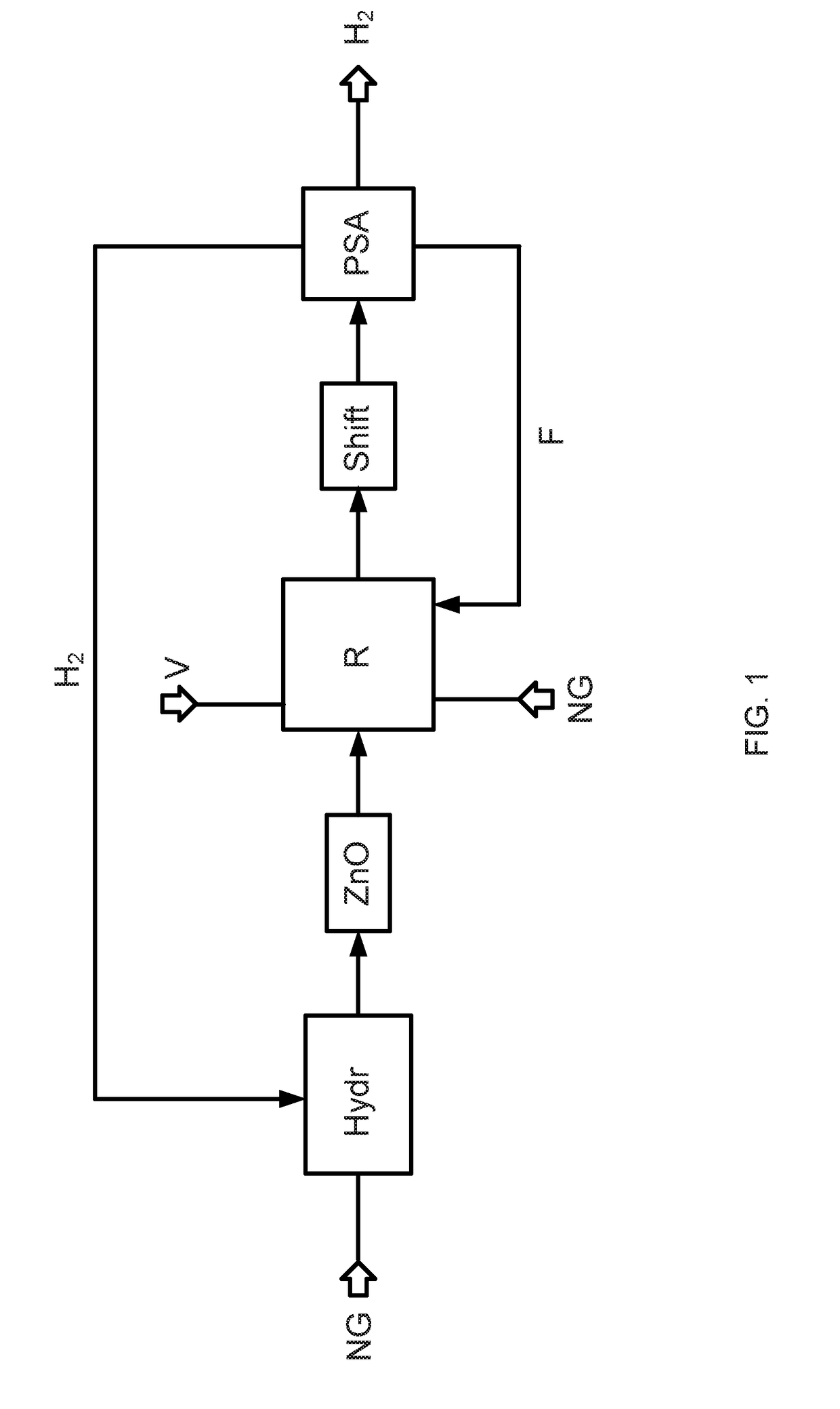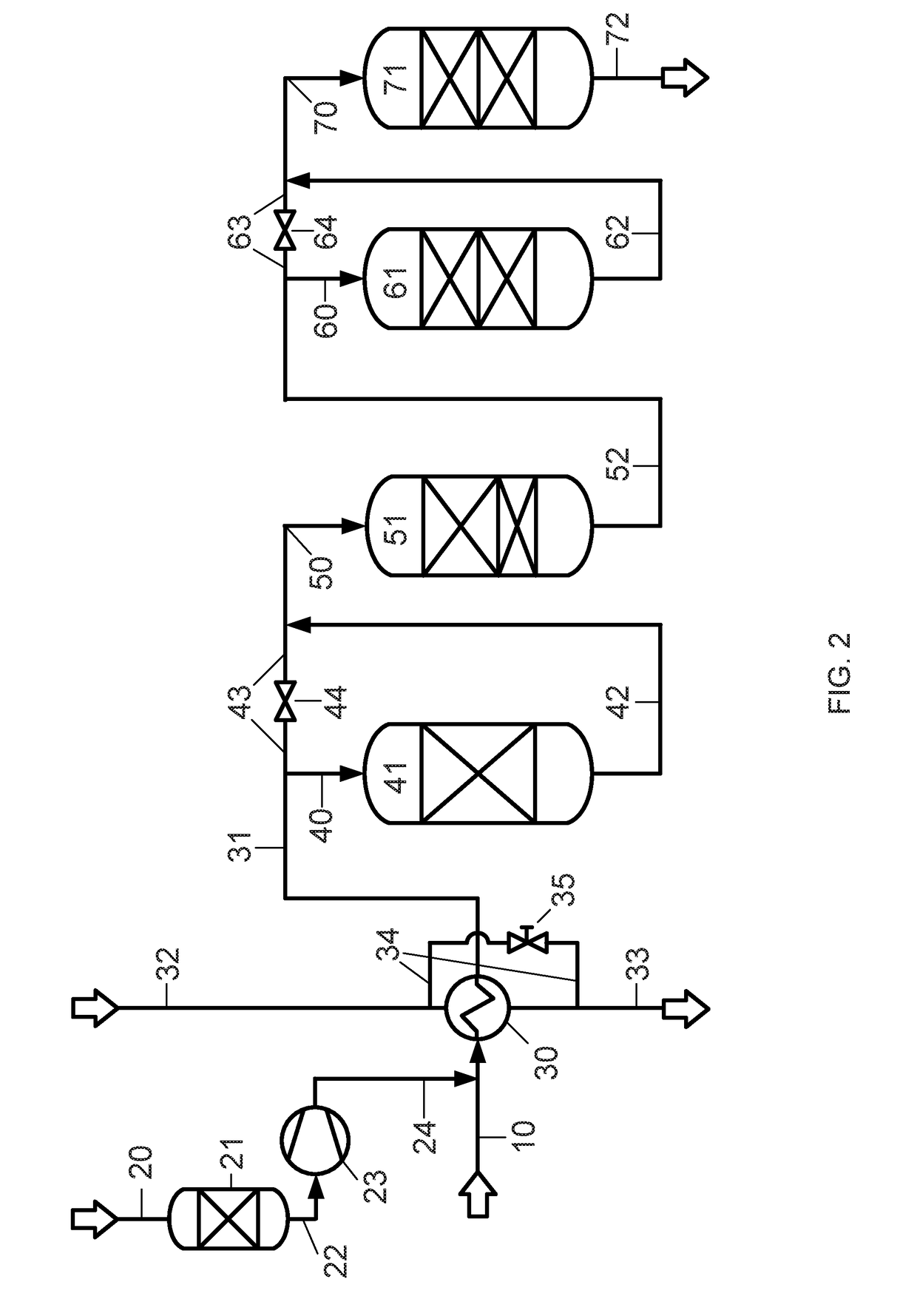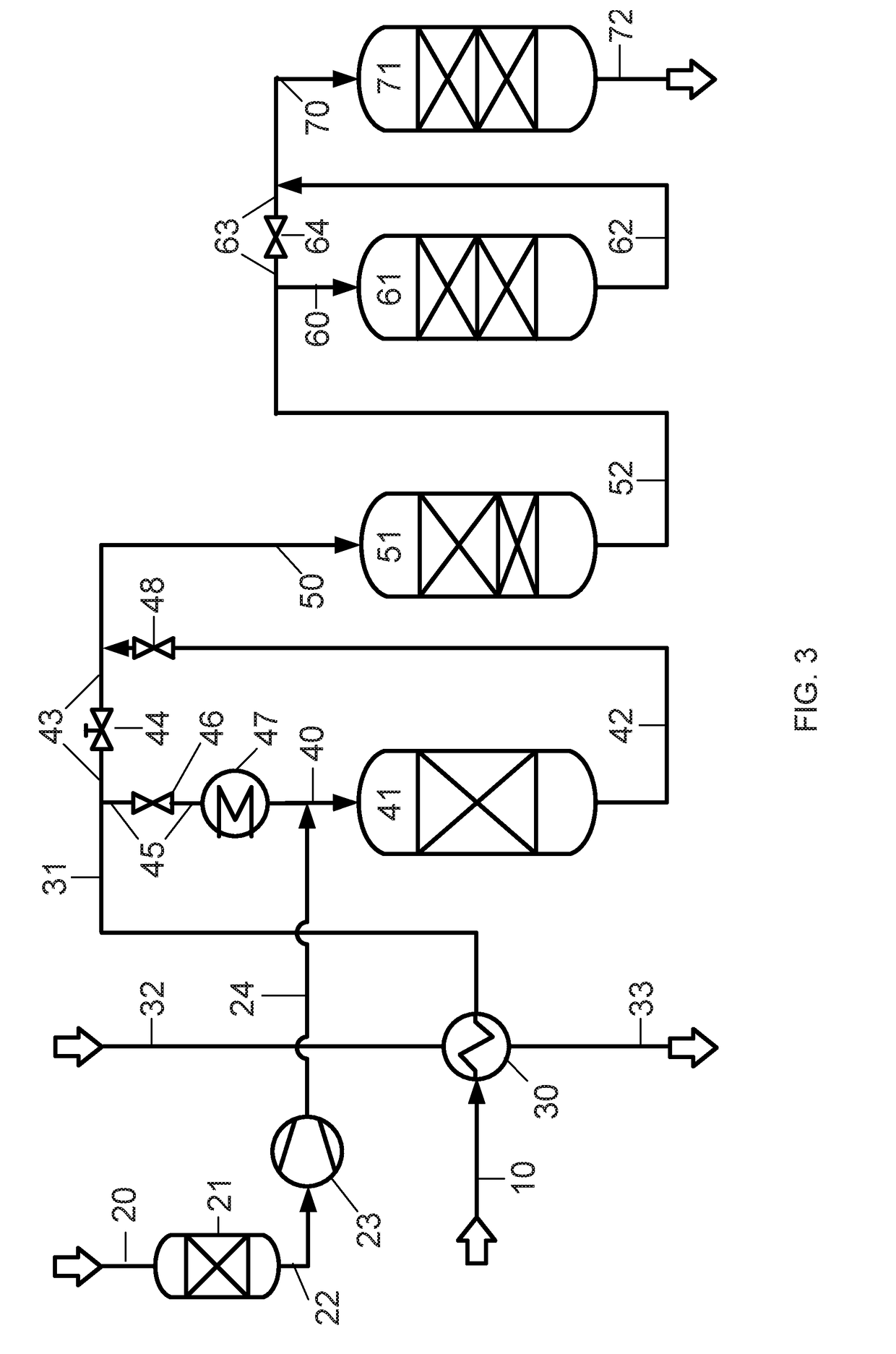Process and apparatus for producing a mixed feed stream for a steam reforming plant
a technology of steam reforming plant and feed stream, which is applied in the direction of chemistry apparatus and processes, gaseous mixture working up, refining to eliminate heteroatoms, etc., can solve the problems of reducing the temperature of the reactor too much, affecting pre-reform, and reducing the logistics needed for steam and oxygen supply, so as to avoid undesired cracking and polymerization reactions, the effect of increasing the decomposition of unsaturated
- Summary
- Abstract
- Description
- Claims
- Application Information
AI Technical Summary
Benefits of technology
Problems solved by technology
Method used
Image
Examples
numerical examples
[0089]In the following numerical examples the mode of action of the invention is illustrated with reference to the results of simulation calculations. Organic sulfur components are not taken into account here, as for the resulting temperature profiles the hydrogenation of the mono- and diolefins is decisive.
[0090]Both examples are based on natural gas as first feed stream and on a refinery waste gas as second feed stream. The compositions of the first and the second feed stream are shown in the columns for conduit 10 and conduit 24 of the material stream table indicated below. All further indications in the material stream table only are applicable for Example 2. The hydrogen content of the refinery waste gas is sufficient for the hydrogenation steps according to the invention, so that the recirculation of hydrogen from the hydrogen product stream of the steam reforming plant can be omitted.
example 1
[0091]According to the first aspect of the invention natural gas as first feed stream is guided to the heat exchanger 30 via conduit 10 at room temperature (25° C.). A refinery waste gas as second feed stream initially is demetallized in the adsorber 21 and subsequently condensed in the condenser 23 and then has a temperature of 81° C. Via conduit 24 the second feed stream is combined with the first feed stream. In the heat exchanger 30 the mixed feed streams are heated such that the temperature in conduit 40 is 260° C. before entry into the diolefin hydrogenation reactor 41. Due to the exothermally proceeding hydrogenation of the diolefins and a part of the olefins, the temperature in conduit 50 before entry into the second hydrogenation stage (reactor 51, olefin hydrogenation+HDS) is about 290° C. Due to the again released reaction enthalpy of the hydrogenation of the olefins and sulfur compounds the temperature at the outlet of the reactor 51 is about 360° C. (conduit 52). With a...
example 2
[0093]The composition and properties of important material streams in conjunction with the following explanation of a second example are shown in the indicated material stream table.
[0094]According to the second aspect of the invention natural gas as first feed stream is guided to the heat exchanger 30 via conduit 10 at room temperature (25° C.). In the heat exchanger 30 the natural gas stream is heated without admixing the second feed stream, so that the gas temperature in conduit 31 before branching into conduits 43 and 45 is 368° C. The first hydrogenation partial stream branched off via conduit 45 is introduced into the cooling device 47, cooled there. and via conduit 40 combined with the second feed stream, which is supplied via conduit 24 and has a temperature of 81° C. The mixture obtained then enters into the diolefin hydrogenation reactor 41 with a temperature of 222° C. and leaves said reactor in conduit 42 with a temperature of 229° C. After combining and mixing with the ...
PUM
| Property | Measurement | Unit |
|---|---|---|
| temperature | aaaaa | aaaaa |
| temperatures | aaaaa | aaaaa |
| temperatures | aaaaa | aaaaa |
Abstract
Description
Claims
Application Information
 Login to View More
Login to View More - R&D
- Intellectual Property
- Life Sciences
- Materials
- Tech Scout
- Unparalleled Data Quality
- Higher Quality Content
- 60% Fewer Hallucinations
Browse by: Latest US Patents, China's latest patents, Technical Efficacy Thesaurus, Application Domain, Technology Topic, Popular Technical Reports.
© 2025 PatSnap. All rights reserved.Legal|Privacy policy|Modern Slavery Act Transparency Statement|Sitemap|About US| Contact US: help@patsnap.com



